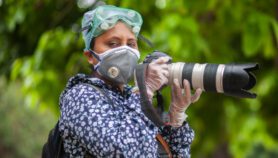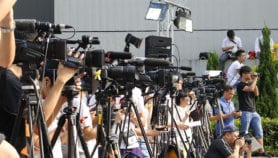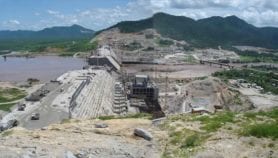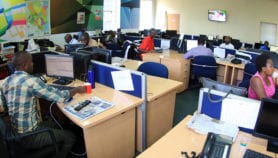By: Luisa Massarani
Send to a friend
The details you provide on this page will not be used to send unsolicited email, and will not be sold to a 3rd party. See privacy policy.
[CUIABA] Science communication is shifting in Brazil. Staff cuts have reduced the number of knowledgeable science journalists in newspapers. But while the media are handling financial restrictions by putting science reporting in the line of fire, public and private organisations are taking an opposite turn and new positions have been created.
"The Brazilian press is in crisis and the market for science journalism continues to decrease in our country," said science writer Marcelo Leite at the 56th annual meeting of the Brazilian Society for the Advancement of Science (BSAS) in Cuiaba in July.
The failure of science journalism to reach significant sections of society is, according to Leite, "restricting debate on important issues that affect everybody, such as genetically modified crops and stem cell research."
Jose Roberto Ferreira, president of the Brazilian Association of Science Journalism, agrees, saying "the high impact press in Brazil is very erratic in its science coverage".
Ferreira attributes this instability to that fact that unlike economics, politics, sports and culture, science has failed to dominate a section of newspapers’ editorial staff. "[The Brazilian Association of Science Journalism] has 541 members, and only 20 per cent of them work for in daily newspapers," he says.
"Few journalists are knowledgeable about science and the size of the editorial staff [for science] has been kept small," says Ricardo Bonalume Neto, a reporter at Folha de São Paulo. "A science journalist’s options are to either not make enough money to feed himself or to write about other subjects instead."
Following the 1980s boom – when several newspapers created sections dedicated to science and new positions for science journalists – the activity is now facing a critical phase, says Leite, being systematically reduced in recent years.
Last month, Leite himself felt the squeeze, losing his position as science editor at the newspaper Folha de São Paulo due to economic cutbacks, though he will still file a weekly column.
For Martha San Juan, a science journalist, director of the magazine Horizonte Geográfico and former editor of science magazine science Galileu, the past four years have been especially bad for science journalism.
Economic difficulties have forced the big media companies to make cuts, retaining only essential areas, says San Juan. "Science has always been considered superfluous".
Ana Lucia Azevedo, who is responsible for science in one of Brazil’s main newspapers O Globo, is more optimistic. "Although the number of science positions in Brazilian newspapers is being reduced, we should remember that new magazines have been launched due to increased public interest in science, mainly from young people," says Azevedo, whose newspaper has created a new Sunday magazine with a science section.
But San Juan, who left her position as editor of Época magazine’s science section in 2001 when it was reduced in size from between 12 and 16 pages to between two and four pages, has less faith than Azevedo in the ability of magazines to compensate for the decline of newspaper reporting on science.
Advertisers perceive the science audience to be unlikely to buy consumer goods, such as cars and computers, so science magazines are not considered to be commercially important, says San Juan.
Leite believes that the problems facing science journalism in Brazil relates not so much to quantity as to quality. "In general, stories are very enthusiastic about science, stressing only the marvellous," he says. "Instead, we need to report science issues critically, considering also the limitations of science."
Sergio Adeodato, editor of Horizonte Geográfico and contributor to SciDev.Net, suggests that this is due in part to science news being increasingly sourced from news and institutional websites. "The side effect of this is that the editors no longer rely on reporters, and the news is no longer questioned, double checked, and put in context," he says.
Paradoxically, the wider world of Brazilian science communication is facing a boom, according to Ildeu de Castro Moreira, head of the Department of Science Popularisation, which was created this year by the Ministry of Science and Technology.
"Several science museums and centres have been created in recent years and science communication is now on the agenda of several research institutions," he says (see Challenges for science communication in Latin America).
A sign of the government’s support for science communication came in July when Brazil’s minister of science and technology signed an agreement with the Brazilian Academy of Science. Central to this is the creation of a US$500,000 fund to support development of science mobile units. These are vehicles that travel throughout the country, especially in remote areas, bringing science exhibitions, lectures, and other educational activities to the public.
"The idea is to support five projects, one in each of the five Brazilian regions, aiming to stimulate interest in science," said Rodrigo Rollemberg, secretary of social inclusion at the Ministry of Science and Technology.
The science and environment journalist Mauricio Tuffani, editor of the Brazilian versions of the United Nations Development Programme and United Nations, agrees that other forms of science communication are on the increase.
"Several organisations are seeking communications professionals with a background in science, technology, health, and environment," says Tuffani, adding that physicians and clinics are hiring press officers to propose profile-raising stories on medical innovations to the press.
Tuffani believes that the tendency for increased investments in public relations in place of advertising has contributed to the changing shape of science journalism in Brazil.
"Unlike a few years ago, when newspapers had more experienced journalists in their staff, today the press offices [of companies, universities] have high level staff while the newspapers increasingly have less experienced professionals," says Tuffani. "The opportunities in science journalism are in fact being reduced, but there are jobs available in commercial and institutional communication."
Ferreira, the president of the Brazilian Association for Science Journalism, agrees with Tuffani and Moreira that the wider world of Brazilian science communication is facing a boom. "Universities are increasingly including stories on science in their newsletters and websites," he says, "And the funding agencies are also waking up the importance of science communication."
"Marcelo Leite’s comment raised an important issue in Brazil," says Ferreira. "There is both a lack of interest in science and an inability within the press to understand the importance of science communication to Brazilian people and the nation as a whole."













